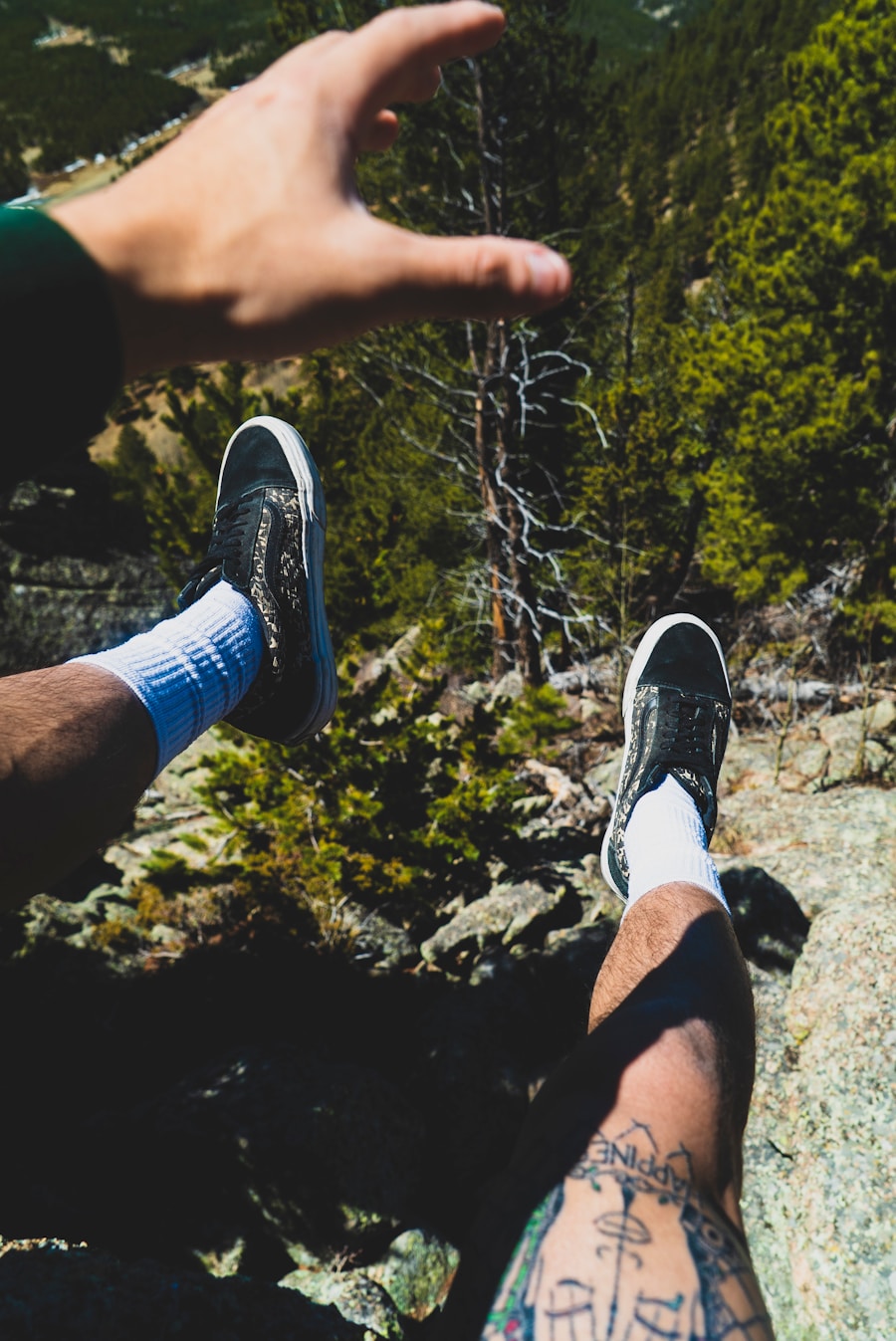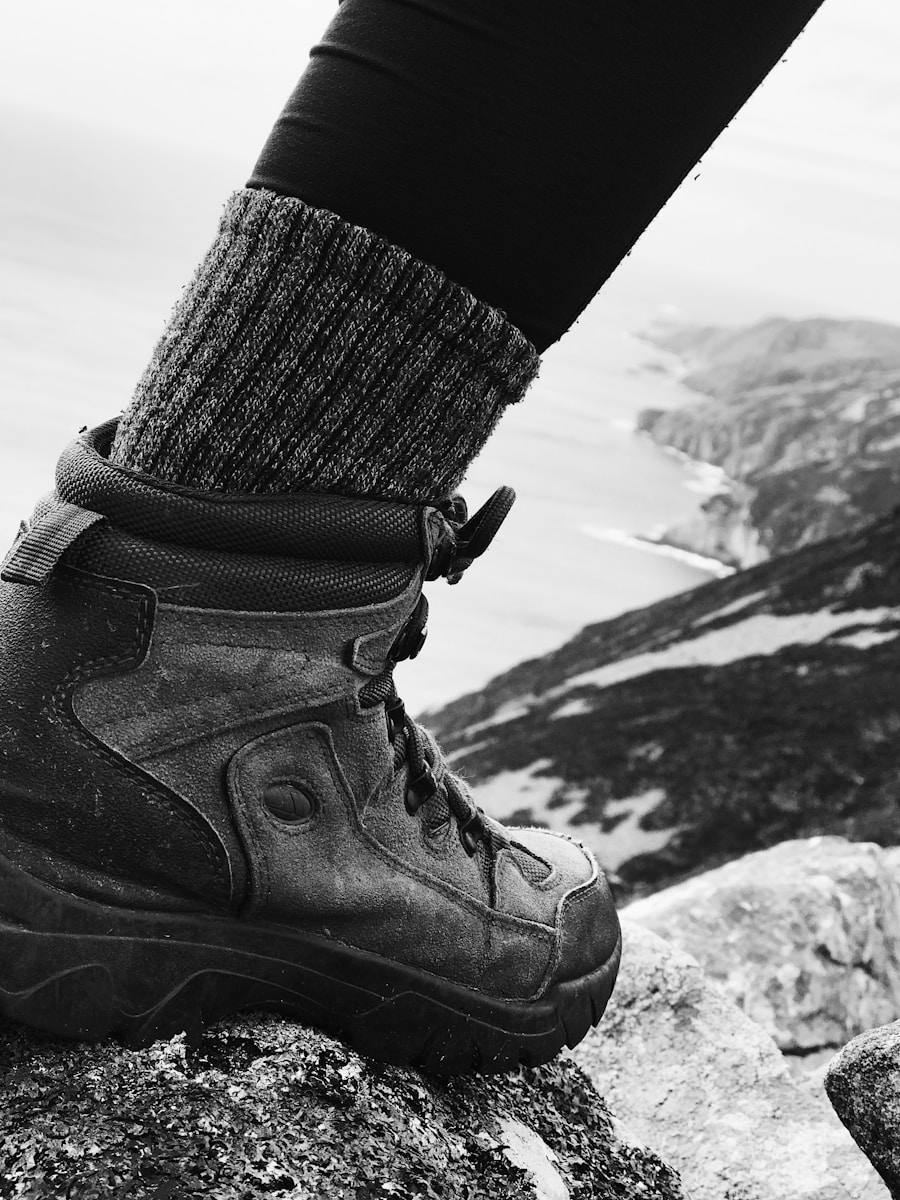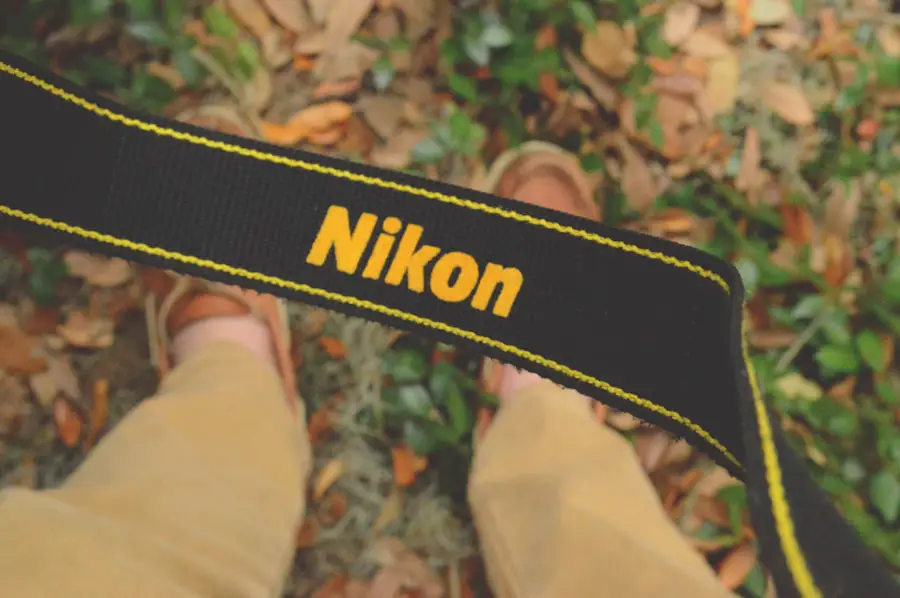Selecting the appropriate hiking socks is a critical aspect of preparing for any outdoor adventure. While many hikers may focus on their boots or other gear, the choice of socks can significantly impact comfort, performance, and overall enjoyment on the trail. The right pair of socks can help regulate temperature, wick moisture away from the skin, and provide cushioning where it is needed most.
Conversely, wearing inadequate or poorly fitting socks can lead to discomfort, blisters, and even long-term foot issues, which can detract from the hiking experience. Moreover, hiking often involves traversing diverse terrains and weather conditions, making the choice of socks even more crucial. For instance, a sock that performs well in warm, dry conditions may not be suitable for wet or cold environments.
By investing time in selecting the right hiking socks, hikers can enhance their performance and reduce the risk of injuries. This attention to detail can make a significant difference, especially on longer treks where foot fatigue and discomfort can become pronounced.
Key Takeaways
- Choosing the right hiking socks is crucial for comfort and preventing blisters on the trail.
- Different types of hiking socks, such as liner socks, midweight socks, and heavyweight socks, offer varying levels of cushioning and insulation.
- Materials like merino wool, synthetic fibers, and silk offer moisture-wicking, odor control, and durability benefits in hiking socks.
- Properly fitting hiking socks should be snug but not too tight, with no extra fabric to cause friction and blisters.
- Consider different hiking socks for various weather conditions, such as lightweight, breathable socks for hot weather and insulated, moisture-wicking socks for cold weather.
Different Types of Hiking Socks and Their Features
Hiking socks come in various types, each designed to cater to specific needs and preferences. One common classification is based on the height of the sock. Crew-length socks typically rise to mid-calf and offer excellent protection against debris and abrasion from boots.
They are ideal for rugged terrains where ankle support is essential. Conversely, ankle-length or no-show socks are favored by those who prefer a lighter feel and less bulk around the ankle, making them suitable for warmer weather or shorter hikes. Another important distinction among hiking socks is their cushioning level.
Some socks feature extra padding in high-impact areas such as the heel and ball of the foot, providing additional comfort during long hikes. These cushioned socks are particularly beneficial for those who carry heavy packs or hike on rocky trails. On the other hand, lightweight socks with minimal cushioning are designed for speed and breathability, making them a popular choice for fast-paced hikes or trail running.
Materials Used in Hiking Socks and Their Benefits

The materials used in hiking socks play a pivotal role in their performance characteristics. Wool, particularly merino wool, is one of the most favored materials due to its natural moisture-wicking properties and temperature regulation capabilities. Merino wool can keep feet warm in cold conditions while remaining breathable in warmer weather, making it a versatile choice for year-round hiking.
Additionally, wool has natural antimicrobial properties that help reduce odor, allowing hikers to wear the same pair for extended periods without discomfort. Synthetic materials such as nylon and polyester are also commonly used in hiking socks. These materials are known for their durability and quick-drying capabilities.
Socks made from synthetic blends often provide excellent moisture management, which is crucial for preventing blisters caused by wetness. Furthermore, many modern hiking socks incorporate advanced technologies such as mesh panels for enhanced breathability and arch support features that improve fit and comfort during long treks.
How to Properly Fit Hiking Socks
| Brand | Material | Thickness | Size | Price |
|---|---|---|---|---|
| Darn Tough | Merino Wool | Medium | Men’s L | 24.95 |
| Smartwool | Merino Wool | Light | Women’s M | 19.99 |
| Thorlo | Acrylic Blend | Thick | Men’s XL | 14.99 |
Achieving the right fit for hiking socks is essential to ensure comfort and prevent issues like blisters or hotspots. When selecting socks, it is important to consider both size and thickness. Hiking socks should fit snugly without being overly tight; they should not bunch up or slide down during movement.
A good rule of thumb is to try on socks with the same footwear that will be worn during hikes to ensure compatibility. This practice helps assess how the sock interacts with the boot’s fit and prevents any unwanted friction. In addition to size, thickness plays a crucial role in fit.
Thicker socks may provide more cushioning but can also create pressure points if they are too tight within a boot. Conversely, thinner socks may offer less protection but can enhance breathability and moisture management. Hikers should consider their personal preferences and the specific conditions they will encounter on the trail when choosing sock thickness.
Trying different styles and brands can help identify the perfect combination of fit and comfort.
Best Hiking Socks for Different Weather Conditions
Weather conditions can vary dramatically during hikes, necessitating different types of socks for optimal performance. In hot weather, lightweight, breathable socks made from moisture-wicking materials are ideal. These socks help keep feet dry by drawing sweat away from the skin while allowing air circulation to prevent overheating.
Brands like Darn Tough offer lightweight merino wool options that excel in warm conditions due to their natural breathability. Conversely, in colder climates or during winter hikes, thicker wool socks are recommended to provide insulation and warmth. These socks often feature additional cushioning to protect against cold surfaces and maintain comfort during extended periods outdoors.
Brands such as Smartwool produce heavy-weight merino wool socks designed specifically for cold-weather hiking, ensuring that feet remain warm even in frigid temperatures. In wet conditions, waterproof or water-resistant socks can be beneficial. These specialized socks often incorporate a waterproof membrane that keeps feet dry while still allowing moisture from sweat to escape.
This feature is particularly useful when hiking in rainy environments or crossing streams where foot immersion is likely. Brands like SealSkinz offer waterproof hiking socks that combine comfort with protection against wet conditions.
Tips for Preventing Blisters and Hotspots with Hiking Socks

Blisters and hotspots are common issues faced by hikers, often resulting from friction between the sock and foot or moisture accumulation. To minimize these problems, it is essential to choose the right sock material that wicks moisture effectively while providing adequate cushioning. Additionally, ensuring a proper fit is crucial; socks that are too loose can bunch up and create friction points, while overly tight socks can restrict circulation and lead to discomfort.
Another effective strategy for preventing blisters is to wear a liner sock underneath a thicker hiking sock. Liner socks are typically made from lightweight synthetic materials that reduce friction against the skin while providing an additional layer of moisture management. This combination allows for better overall foot health during long hikes.
Regularly checking feet during breaks can also help identify any developing hotspots before they turn into blisters, allowing hikers to address issues proactively.
Maintenance and Care of Hiking Socks
Proper maintenance and care of hiking socks can significantly extend their lifespan and performance capabilities. After each hike, it is advisable to wash socks according to the manufacturer’s instructions, typically using a gentle cycle with cold water to preserve elasticity and moisture-wicking properties. Avoiding fabric softeners is crucial as they can leave residues that hinder moisture management.
Drying techniques also play a vital role in maintaining sock integrity. It is best to air dry hiking socks rather than using a dryer, as high heat can damage elastic fibers and lead to shrinkage. Hanging them up or laying them flat ensures they retain their shape while preventing any potential damage from tumbling in a dryer.
Additionally, inspecting socks regularly for signs of wear and tear is essential. Small holes or thinning areas can compromise performance during hikes; addressing these issues promptly—whether through repairs or replacement—can prevent larger problems down the line.
Top Hiking Sock Brands to Consider
When it comes to selecting high-quality hiking socks, several brands stand out due to their commitment to performance, comfort, and durability. Darn Tough is renowned for its lifetime guarantee on its products, offering a wide range of merino wool options that cater to various hiking conditions. Their attention to detail in design ensures that hikers receive exceptional cushioning and support.
Smartwool is another leading brand known for its innovative use of merino wool in outdoor apparel. Their hiking socks are designed with features such as targeted cushioning and mesh ventilation zones that enhance breathability while providing comfort during long treks. For those seeking synthetic options, Wigwam offers a diverse selection of hiking socks made from durable materials that excel in moisture management and quick-drying capabilities.
Their products are well-regarded among hikers who prioritize performance in challenging conditions. Lastly, Thorlo specializes in cushioned hiking socks designed specifically for various activities and terrains. Their focus on comfort through padding makes them an excellent choice for those who prioritize foot protection during extended hikes.
By considering these brands and understanding the importance of choosing the right hiking socks, hikers can significantly enhance their outdoor experiences while minimizing discomfort and potential injuries on the trail.
If you’re planning a spring hiking adventure and looking for the best hiking socks to keep your feet comfortable, you may also want to check out this article on the best ski travel bag. Having the right gear for your outdoor excursions is essential, and a quality travel bag can make all the difference in organizing and protecting your equipment. So, while you’re stocking up on hiking socks, be sure to consider investing in a reliable ski travel bag for your next winter getaway.
FAQs
What are hiking socks?
Hiking socks are specially designed socks that provide cushioning, support, and moisture-wicking properties for hikers. They are typically made of merino wool, synthetic materials, or a blend of both to provide comfort and durability during long hikes.
What are the best materials for hiking socks?
The best materials for hiking socks are merino wool and synthetic blends. Merino wool is known for its moisture-wicking and odor-resistant properties, while synthetic materials like nylon and polyester provide durability and quick-drying capabilities.
What features should I look for in hiking socks?
When choosing hiking socks, look for features such as cushioning in the heel and toe areas, arch support, moisture-wicking properties, seamless toe closures to prevent blisters, and a snug, but not too tight, fit to prevent bunching and slipping.
How do I choose the right size of hiking socks?
To choose the right size of hiking socks, refer to the manufacturer’s size chart and consider the type of hiking boots or shoes you will be wearing. It’s important to ensure a proper fit to prevent blisters and discomfort during your hike.
What are some popular brands of hiking socks?
Some popular brands of hiking socks include Darn Tough, Smartwool, REI Co-op, Thorlos, and Wigwam. These brands offer a variety of hiking socks with different features and materials to suit individual preferences.
